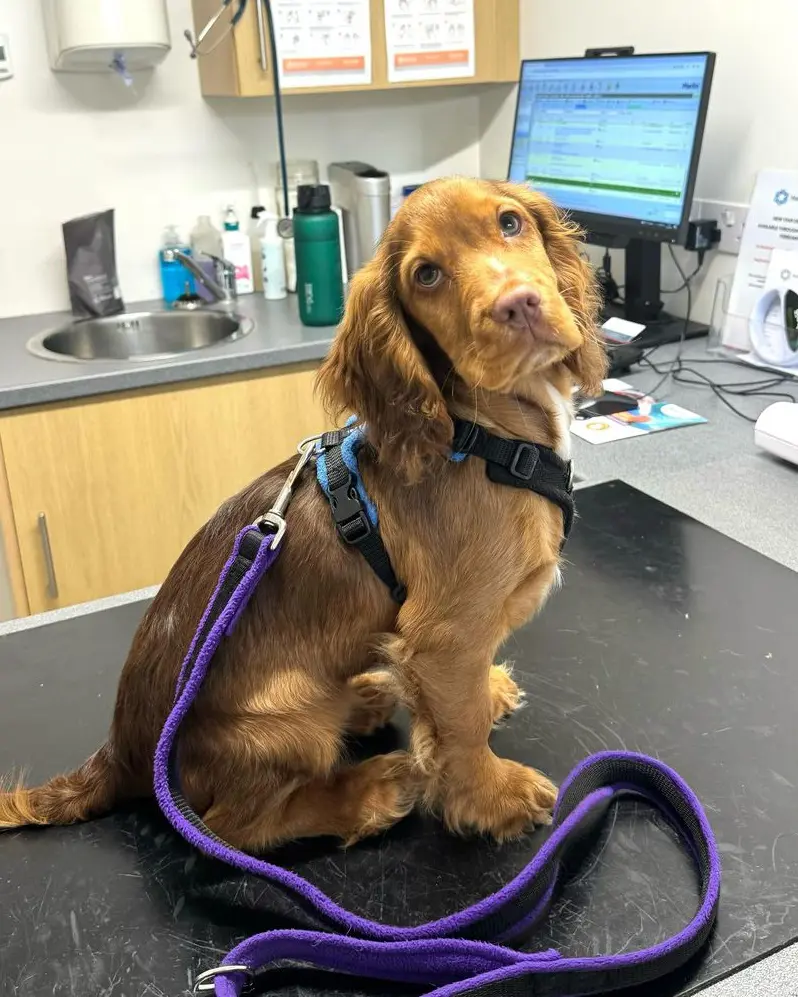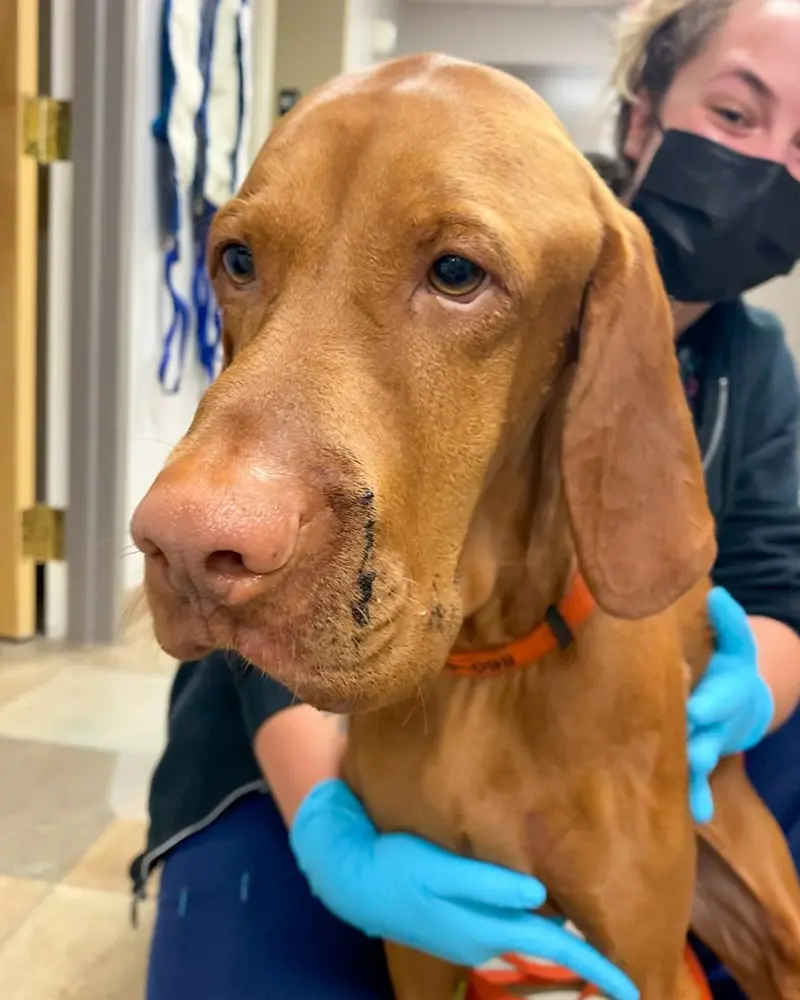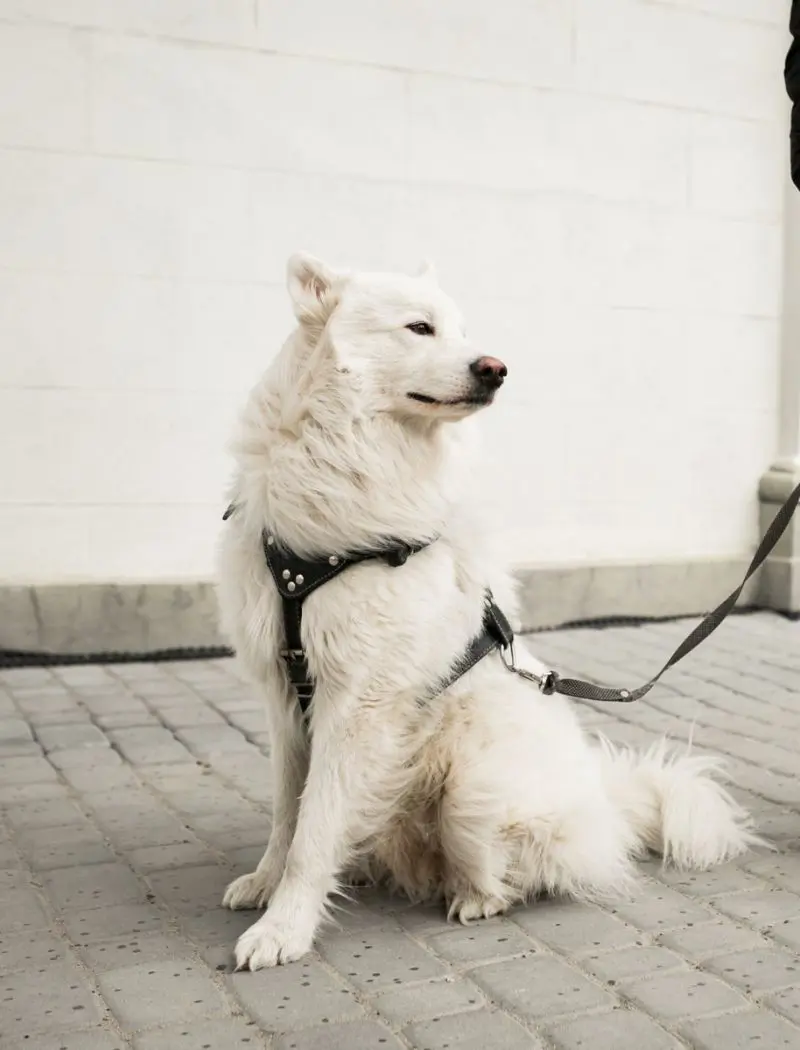What To Do If Snake Bites Your Dogs

Watching your dog suffer from a snake bite can be devastating for pet parents. However, keeping calm is vital as the next few minutes will possibly determine the chances of survival.
Normally, a venomous snake bite can turn deadly in around 30 minutes to 2 hours. The dog must receive the appropriate treatment before the venom becomes lethal. Here's how to identify the signs of snake bites in dogs and treat them effectively.
Determining Signs Of Snake Bite

Dogs might show a wide range of reactions when bitten by a snake. Symptoms can vary depending on the type of snake, the amount of venom injected, and the location of the bite.
Vets usually look for these common symptoms to diagnose snakebite in dogs:
Swelling
Swelling occurs around the bite area due to the inflammatory response triggered by the venom. The body reacts to the venom by releasing fluid into the surrounding tissues, causing it around the bite area.
Swelling can spread rapidly and become severe, sometimes even causing difficulty breathing if the bite is near the face or neck. Likewise, severe swelling can indicate a swift venom progression into the bloodstream.
Visible Puncture Wounds
Snake bites often appear as two small, distinct holes from the snake’s fangs. However, the wounds may be difficult to spot, especially in dogs with thick or dark fur.
The bite marks are surrounded by localized swelling, redness, and sometimes bleeding. The size and depth of the puncture wounds can vary depending on the snake's size and the bite's location. In some cases, puncture wounds might also leak clear or blood-tinged fluid, indicating the entry point of the venom.
Skin Discoloration and Bruising
Some snake venoms contain enzymes that break down blood vessel walls and tissue structures, leading to internal bleeding and bruising. This discoloration can appear as red, purple, or dark blotches and may spread from the bite area as the venom disperses.
Bruising indicates that the venom has started affecting the circulatory system. These symptoms can be a sign of severe envenomation, necessitating immediate medical attention.
Severe Pain
Pain can result from both the physical trauma of the bite and the venom’s toxic effects on tissues and nerves. The pain may be localized at first, directly around the bite site, but it can quickly spread as the venom infiltrates the surrounding areas.
Meanwhile, the intensity of the pain can cause the dog to become restless, whimper, or attempt to bite or lick the area.
Foaming in the Mouth
Drooling can occur in dogs once the venom affects the nervous system. Some venoms contain neurotoxins that can impair muscle control and cause difficulty in swallowing.
Excessive foaming can also result from nausea or an inflammatory response in the mouth and throat. These symptoms, especially when combined with others like vomiting or difficulty breathing, indicate a serious systemic reaction to the venom.
Immediate Response To Snake Bite On Your Dog
While veterinary care is necessary in almost all cases of snake bites on dogs, pet owners should still keep their pups alive and breathing until proper treatment is available.
Panicking often worsens the situation; so, it's better to remain calm and follow these steps if a snake bites dogs.
Keep Your Dog Still
Movement can accelerate the spread of venom through the bloodstream, so keeping your calm and still is crucial. Dogs naturally react to pain or fear by moving or running, which increases their heart rate and circulates venom more quickly.
Gently restrain your dog by holding them in a comfortable position or placing them on a stretcher or blanket. Avoid any physical activity, as even slight movements can worsen the situation. The calmer and more immobile the dog, the slower the venom travels.
Identify the Snake
Determining the snake can help in determining the appropriate treatment and antivenom. Take note of the snake's size, color, and markings, but only if this does not pose additional danger to you or your dog.
Never attempt to catch or kill the snake, as this can lead to further bites or injuries. Knowing the snake type can help veterinarians prepare for specific types of venom. However, even if you cannot identify the snake, it's vital to get your dog to a veterinary professional immediately.
Do Not Apply Ice
Applying ice to a snake bite on a dog can do more harm than good. Ice restricts blood flow, which may worsen tissue damage and cause the venom to concentrate in one area.
This can increase the risk of severe tissue necrosis and hinder the body's natural ability to dilute and neutralize the venom. Instead of using ice, it's crucial to keep the dog calm and immobilized, preventing the venom from spreading quickly through the bloodstream.
Keep the Bite Area Below the Heart
Maintain the bite area below the level of the heart to slow the spread of venom and reduce blood flow to the affected area. Gravity can assist in minimizing the rate at which venom circulates throughout the body.
If the bite is on a limb, avoid elevating it. Instead, allow it to rest in a position lower than the chest. This technique works alongside keeping your dog still to slow the progression of venom.
Avoid Feeding or Giving Water
Ingesting food or water can lead to complications, especially if your cat becomes nauseous or needs surgery. After a snake bite, venom can cause symptoms like vomiting, lethargy, and difficulty swallowing.
Feeding or giving water might induce vomiting. This can worsen the cat’s condition by increasing stress and potentially causing choking or aspiration.
Additionally, some treatments for snake bites, such as antivenom administration, may require anesthesia or sedation. If your cat has food or water in its stomach, there is an increased risk of aspiration pneumonia during these procedures. To reduce the risk of complications, it’s best to withhold food and water until a veterinarian advises otherwise.
How To Treat Snake Bites In Dogs?
If your dog is bitten by a snake, it's important to act quickly and calmly. Start by keeping your dog as still as possible, as movement can cause the venom to spread faster through their body.
Examine the bite area if possible, but don't waste time looking for the snake or trying to identify it. Instead, focus on your dog’s well-being. If the bite is on a limb, you can use a leash or cloth to gently limit movement, but be careful not to tie it too tightly, as this can cause more harm than good.
The most crucial step is to get your dog to a veterinary clinic as quickly as possible. Carry or transport your dog carefully to avoid jostling or stress, which can worsen the situation. Throughout the journey, keep your dog warm and as comfortable as possible.
How To Protect Your Dog From Snakes?
Preventing snake bites is far better than going through a hefty treatment process. Even with proper treatment, it may take months for a dog to recover from a snake bite.
Proper preparation often involves avoiding the snake altogether or at least providing training to identify and neutralize threats. Here are some effective strategies:
- Avoid Snake Habitats: Keep your dog away from areas known for high snake activity, including tall grass, dense underbrushes, woodpiles, and rocky outcrops. Stick to well-trodden paths during walks and avoid letting your dog roam freely in areas where snakes are commonly found.
- Keep Your Yard Clean: Maintain your yard by regularly mowing the lawn, trimming bushes, and removing debris like woodpiles or thick ground cover. Snakes are attracted to environments that provide cover and hunting grounds, so a tidy yard can deter them.
- Train Your Dog: Teach your dog to avoid snakes using basic commands like “leave it” or “come.” Snake avoidance training can help dogs recognize the scent or sight of a snake and avoid them. Professional trainers offer specialized courses for this purpose.
- Leash Your Dog: When walking in unfamiliar areas or during snake season, keep your dog on a leash. This control prevents your dog from wandering off the path and potentially encountering a snake.
- Snake Repellents: Use snake repellent around your home’s perimeter, but be cautious of their safety for pets. Some natural repellent, like sulfur or clove oil, can help deter snakes but always check that they are safe for dogs.
Snakebite Treatment Methods To Avoid

Many times, dog owners try to use pseudoscientific knowledge to help their pets. However, instead of helping the situation, these ineffective measures worsen the dog's condition.
These methods are not recommended as they can cause more harm than good:
- Cutting the Wound: Making incisions around the bite to "bleed out" the venom is dangerous and ineffective. It increases the risk of infection and does not remove the venom from the bloodstream.
- Sucking Out Venom: Attempting to suck out venom from the bite site can introduce bacteria into the wound. This method does not remove venom from the tissue or bloodstream.
- Electroshock Therapy: Applying electrical shocks to the bite area has been disproven. It does not neutralize venom and can cause severe burns or other injuries.
- Homeopathic Remedies: Using homeopathic treatments or natural remedies instead of proven medical interventions does not effectively treat venomous bites and can delay proper care and worsening outcomes.
- Alcohol and Bleach Application: Applying alcohol, bleach, or other chemicals to the bite site is dangerous and ineffective. It does not neutralize venom and can damage tissues.
Are All Snake Bites Same To Dogs?
Snake bites can vary greatly in their severity for dogs, largely depending on the species of snake involved and the type of venom injected. The intensity and effects of snake venom differ significantly among snake species.
Some of the most dangerous snakes for dogs include:
- Eastern Diamondback Rattlesnake: Known for its highly potent hemotoxic venom that can cause severe tissue damage and rapid death if untreated.
- Mojave Rattlesnake: Has a particularly deadly neurotoxic venom that can lead to respiratory failure.
- Coral Snake: Possesses a potent neurotoxin that can cause paralysis and respiratory failure.
On the other hand, some venomous snakes pose a lower risk to dogs due to their less potent venom or tendency to deliver dry bites:
- Copperhead: Although venomous, copperhead bites are generally less severe, often resulting in pain and localized swelling without systemic effects.
- Garter Snake: While mildly venomous, garter snake bites typically cause minimal swelling or irritation and are rarely life-threatening.
- Hognose Snake: This snake's venom is mild, and bites are usually not harmful to dogs, often causing only mild irritation.
Can A Dog Survive A Snake Bite?
A dog can survive a snake bite, but the chances of survival depend on several factors, including the type of snake, the location of the bite, and how quickly the dog receives treatment.
The size and health of the dog also play a role. Larger dogs may have a better chance of surviving a venomous bite because the venom is less concentrated in their bodies.
On the other hand, smaller dogs are more vulnerable and may experience more severe effects. The location of the bite is crucial as well; bites to the chest, neck, or face can be more dangerous than bites to the limbs.
Top Lists







